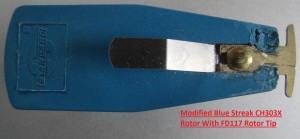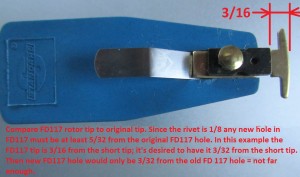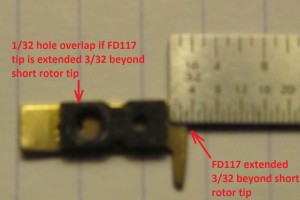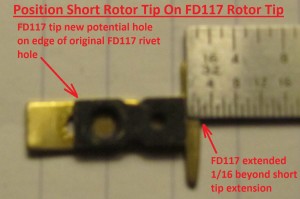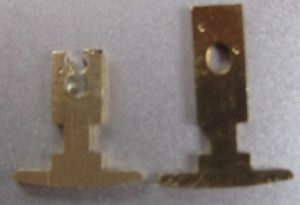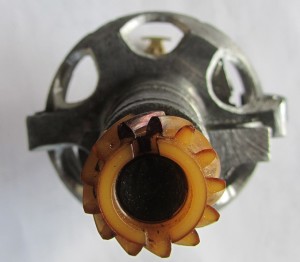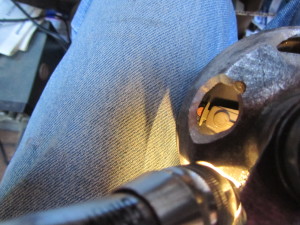Do you know what this Poor Secondary Voltage Fix #1 for your slant six is and why it looks like it does?
The hint is that more sparking occurs in the distributor cap than at the spark plugs which is a bad thing and it’s especially aggravated by the distributor caps & rotors sold new today versus the ones available back in the 50’s and 60’s.
The answer is coming with tables and testing so come back here to this post soon for the background and testing results if your interested.
Here’s another hint; detailed instructions on how to build a rotor;
FD117-Rotor-Tip-And-MO3000-Rotor-Suggested-Construction-Method-1 (1)
And sill another hint: detailed instructions on how fit a FD117 Rotor Tip And MO3000 Rotor into your distributor cap:
Instructions to Fit FD117 Extended Tipped Rotor Into Slant 6 Distributor Cap
Another hint is the bottom line Summary:
Summary of Distributor Cap to Rotor Gap Testing
And yet another hint: detailed instructions on how to fit a FD117 Rotor Tip to a Short tip Rotor:
FD117 Tip Installed On Short Tip Rotor
And the pictures to do that task:
Enough hints!………. The background starts with taking a long trip (like 7000 miles in one month) and having the ignition system break down 6 times causing the car to stop running each time. Next is to go thru several cycles of supplying all new ignition components and have the same breakdown occur only 1000 miles later or so. Typical failures included fractured distributor center electrode, ECU failure, and coil failures as well as distributor gear failure. This could put a damper on your trip?
Coil wire voltage was running over 20,000 volts and it should be below 8000 volts. There was no improvement in Secondary Voltage after all the new ignition components were installed. So it turns out after much diagnostics that the distributor cap and rotor were not made to the standards that existed years ago. Gaps between the rotor and distributor terminals had grown to as much as 1/8 ” when they use to be less than 1/32″. Worse the gaps went to 0 on occasion which caused the rotor to hit the distributor terminal and caused the distributor gear to strip and fail…..which of course brings an engine to an abrupt stop.
The sloppy machining was determined by making a jig to check out newly made caps and rotors as well as caps & rotors from the early 60’s. The jig:
Above jig picture is an upside down distributor, without cap, shown with access holes to see the rotor tip.
Below picture shows the cap on the jig with rotor tip and terminal lit up by small flashlight for measuring,
More than 20 rotor/cap combos were examined. Secondary voltages in the coil wire were measured for each of the cases and the striking changes in Secondary Voltages were directly related to the gaps between the cap terminal and rotor tip. Ultimately it was determined that the caps are machined off center leading to a wide variation in gaps within even one cap.
The above links provide the data and ultimate fix that most could do themselves. Obviously a lot of reliability testing is needed next to validate that a correction in the cap and rotor is going to provide the fix to get ignition component life back to what is reasonable. See the other Secondary Voltage article at this website on more about the importance of Secondary Voltage within acceptable levels.
Bottom line: best to get your engine coil wire Secondary Voltage tested before using the engine significantly.

